A new seismic methodology to significantly improve deeper data character and interpretability on the North West Shelf
Andrew Long A , Guillaume Cambois B , Gregg Parkes C , Anders Mattsson B and Terje Lundsten BA Petroleum Geo-Services Level 4, IBM Centre 1060 Hay Street West Perth WA 6005 Australia
B Petroleum Geo-Services Strandveien 4 1366 Lysaker Norway
C Petroleum Geo-Services PGS Court, Halfway Green Walton-on-Thames Surrey, KT12 1RS UK
The APPEA Journal 49(2) 572-572 https://doi.org/10.1071/AJ08045
Published: 2009
Abstract
The sea-surface reflection generates interferences between up- and down-going waves that ultimately limit the bandwidth of marine seismic data. This phenomenon known as ghosting actually occurs twice—on the source side and on the receiver side. Ghost attenuation or elimination to increase the signal bandwidth has been the focus of extensive research. The receiver ghost can be removed using dual-sensor ocean-bottom devices (Barr and Sanders, 1989), a dual-sensor towed streamer (Carlson et al, 2007) or an over/under streamer acquisition (Brink and Svendsen, 1987). The over/under technique can also be used to remove the source ghost (Moldoveanu, 2000) but it requires flip-flop shooting of two sources at two different depths, ultimately halving the survey shot-point density.
Alternatively, the source ghost can be attenuated using a beam steering technique originally developed some 60 years ago for dynamite land acquisition (Shock, 1950). The principle is to detonate charges at various depths in a sequence that constructively builds the down-going wave at the expense of the up-going wave. This way the energy of the ghost (the surface-reflected up-going wave) is reduced compared to that of the primary pulse. In this paper we adapt the beam steering approach to airgun arrays in the marine environment.
keywords: Penetration, resolution, airgun, source array, dual-sensor, receiver ghost, source ghost, source signature, signal, noise, offshore exploration, North West Shelf, carbonates
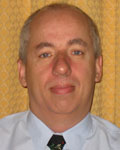
Andrew Long received a PhD in geophysics from the University of Western Australia in 1996 and has more than 15 years of experience in both the seismic industry and academia. He is currently geophysical advisor within PGS, having served various regional and global roles with PGS since 1997. He is the Society of Exploration Geophysicists (SEG) 2009 honorary lecturer for the South Pacific region. andrew.long@pgs.com |
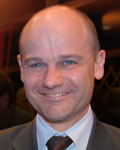
Guillaume Cambois received a PhD in geophysics from the University of Texas at Austin in 1991. He then spent 20 years with CGG holding numerous positions in data processing and research and development. He joined PGS in 2007, and is currently a senior advisor. guillaume.cambois@pgs.com |
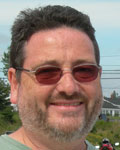
Gregg Parkes graduated from University College London in 1979 with a PhD in astrophysics. He has worked in the defence, nuclear and software industries, but mainly in geophysics—in which he has 28 years experience. He has close to 50 publications, and is co-author of a book titled The Marine Seismic Source (Modern Approaches in Geophysics). He has worked for PGS since 1994, and is currently project manager of their Source Technology Project. gregg.parkes@pgs.com |
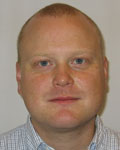
Anders Mattsson joined PGS in 2006 and is responsible for the development of new source, positioning, and towing and handling technologies. Before he joined PGS he worked for nine years on product development within the German automobile industry, specializing in the field of structural dynamics and acoustics at Porsche’s research and development center. He has a MSc in mechanical engineering from the Institute of Technology at Linköping, Sweden, and finished off his studies at the Institute of Aeronautical Engineering and Space Technology at the Technical University of Stuttgart, Germany. anders.mattsson@pgs.com |
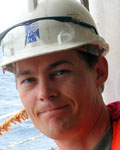
Terje Lundsten has BEng in electronics and cybernetics. He joined PGS after graduating from Kongsberg College of Engineering spring 1994, and has accumulated twelve years offshore experience with seismic surveying. Since 2006 he has been working with development projects in the research and development department of PGS. His latest work has been concerned with the application of the multi-level source to seismic surveys. terje.lundsten@pgs.com |
References
Barr, F.J. and Sanders, J.I., 1989—Attenuation of water-column reverberations using pressure and velocity detectors in a water-bottom cable. 59th Annual International Meeting, SEG, Expanded Abstract, 653-6.Brink, M. And Svendsen, M., 1987—Marine seismic exploration using vertical receiver arrays: A means for reduction of weather downtime. 57th Annual International Meeting, SEG, Expanded Abstract, 184-7.
Carlson, D., Long, A., SöLlner, W., Tabti, H., Tenghamn, R., and Lunde, N. (2007). Increased resolution and penetration from a towed dual-sensor streamer First Break 25, 71–7.
Moldoveanu, N., 2000—Vertical source array in marine seismic exploration. 70th Annual International Meeting, SEG, Expanded Abstract, 53-6.
Shock, L. (1950). The progressive detonation of multiple charges in a single seismic shot Geophysics 15, 208–18.


